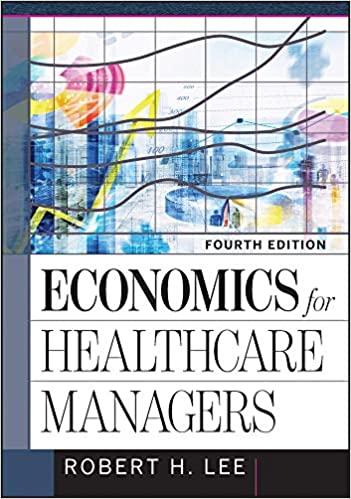This question actually has two parts, because cost has several meanings. Moving to Medicare for all would
Question:
This question actually has two parts, because cost has several meanings. Moving to Medicare for all would reduce administrative costs for insurers and providers. Overall, private insurers’ administrative costs average 13 percent of premiums, and Medicare’s administrative costs are less than 2 percent of total spending (Congressional Budget Office 2016). This change could save as much as $125 billion per year. How much dealing with just one insurer would reduce providers’ costs is not clear. It could be as little as $125 billion per year or as much as $500 billion per year if capitation were the norm.
From the perspective of patients, moving to Medicare for all would reduce some prices and increase others. If Medicare gradually replaced private insurance and kept Medicare prices, provider revenues would fall, because Medicare prices are lower than private prices. (This decrease would be partially offset by higher revenues if Medicare replaced Medicaid.) Overall, Medicaid fees average 72 percent of Medicare fees, but state averages range from 38 percent in Rhode Island to 126 percent in Alaska (Kaiser Family Foundation 2017). Private physician fees average 125 percent of Medicare rates, and private hospital prices average 189 percent of Medicare rates (Maeda and Nelson 2017). When Maryland moved to a global budget model for hospitals, it used prices between Medicare rates and private rates (Haber et al. 2017), so it is not completely clear how large a reduction would occur.
In 2016 private insurance spent $1,123 billion ($5,721 per person for 196 million beneficiaries), Medicare spent $672 billion ($12,046 per person for 56 million beneficiaries), and Medicaid spent $566 billion ($7,941 per person for 71 million people) (Hartman et al. 2018). Out-ofpocket spending was $353 billion, and 29 million people lacked health insurance. Savings could be up to $455 billion if private prices were cut to equal Medicare prices. Spending could increase by up to $160 billion if Medicaid prices were increased to Medicare levels. Spending could increase by $100 billion to $165 billion if all the uninsured were covered.
There is one more possible source of savings (apart from cost reductions resulting from the shift from volume to value): lower pharmaceutical prices. Per capita spending for pharmaceuticals is $1,112 in the United States versus $740 in Germany and $656 in France (Sarnak et al. 2017). If Medicare negotiated pharmaceutical prices, savings of $120 billion to $140 billion might be possible.
Discussion Questions
• How much would moving to a single payer plan reduce administrative costs?
• How much would provider revenues fall if Medicare replaced private insurance?
• How much would provider revenues rise if Medicare replaced Medicaid?
• How much would spending change if Medicare replaced private insurance and Medicaid?
• How much would provider revenues rise if all the uninsured were eligible for Medicare?
• How fast has spending per person been increasing for private insurance?
• How fast has spending per person been increasing for Medicare?
• Has Maryland’s global budget plan helped realize the Triple Aim?
• Has Vermont’s Medicare and Medicaid ACO helped realize the Triple Aim?
• Do you favor Medicare for all? The status quo? Some other alternative?
Step by Step Answer:






